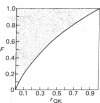Abstract
A model is presented that demonstrates that asymmetries in relatedness such that individuals are more closely related to siblings than to offspring develop in diploid pedigrees under conditions of inbreeding. Given also certain incestuous conditions, the model predicts that eusocial-type helping behavior can be favored by natural selection. Three cases of the model are discussed along with implications for termite eusociality. Several aspects of termite biology, particularly the existence of replacement reproductives, are interpreted as evidence that termite eusociality may have arisen under the special conditions specified in the models.
Keywords: diploidy, inbreeding, relatedness, supplementary reproductives, sociality
Full text
PDF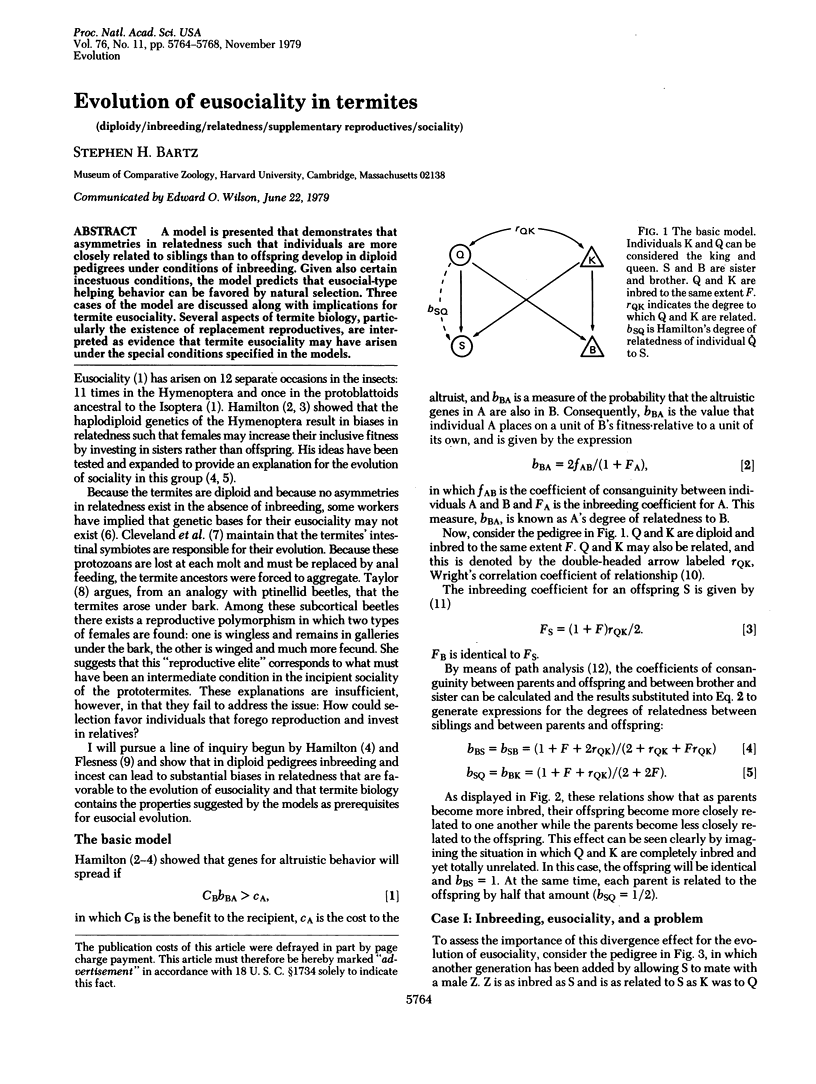
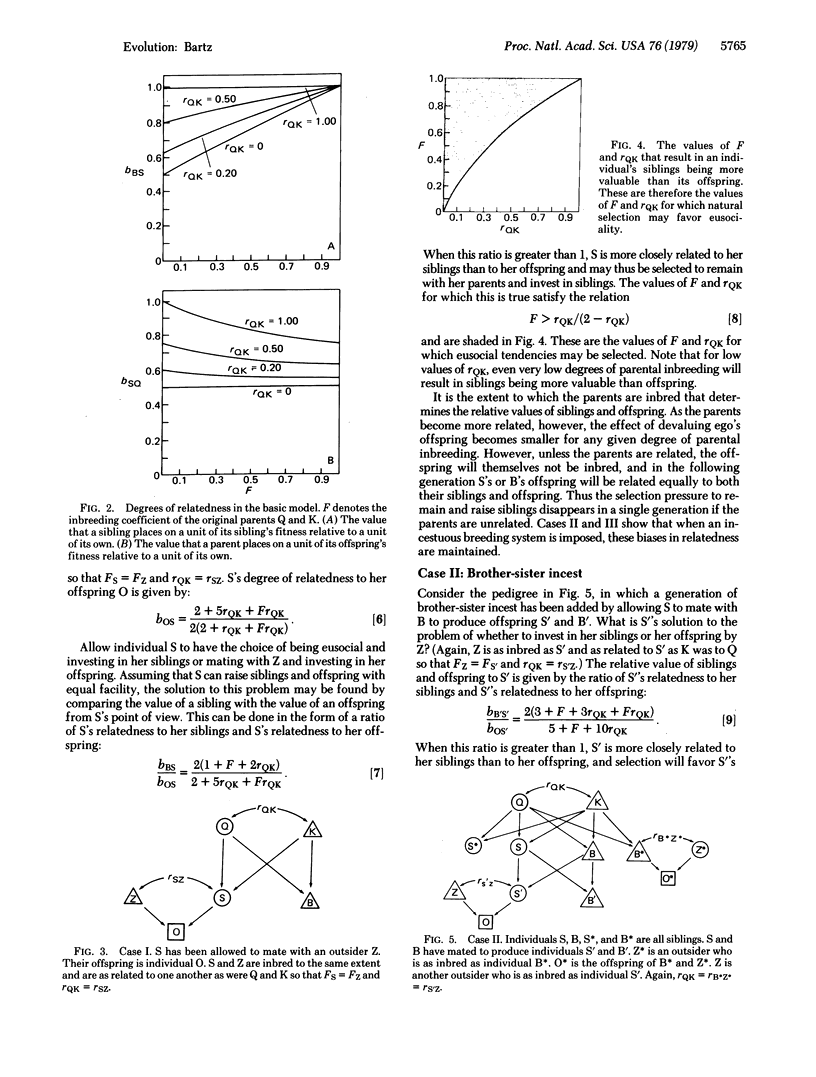
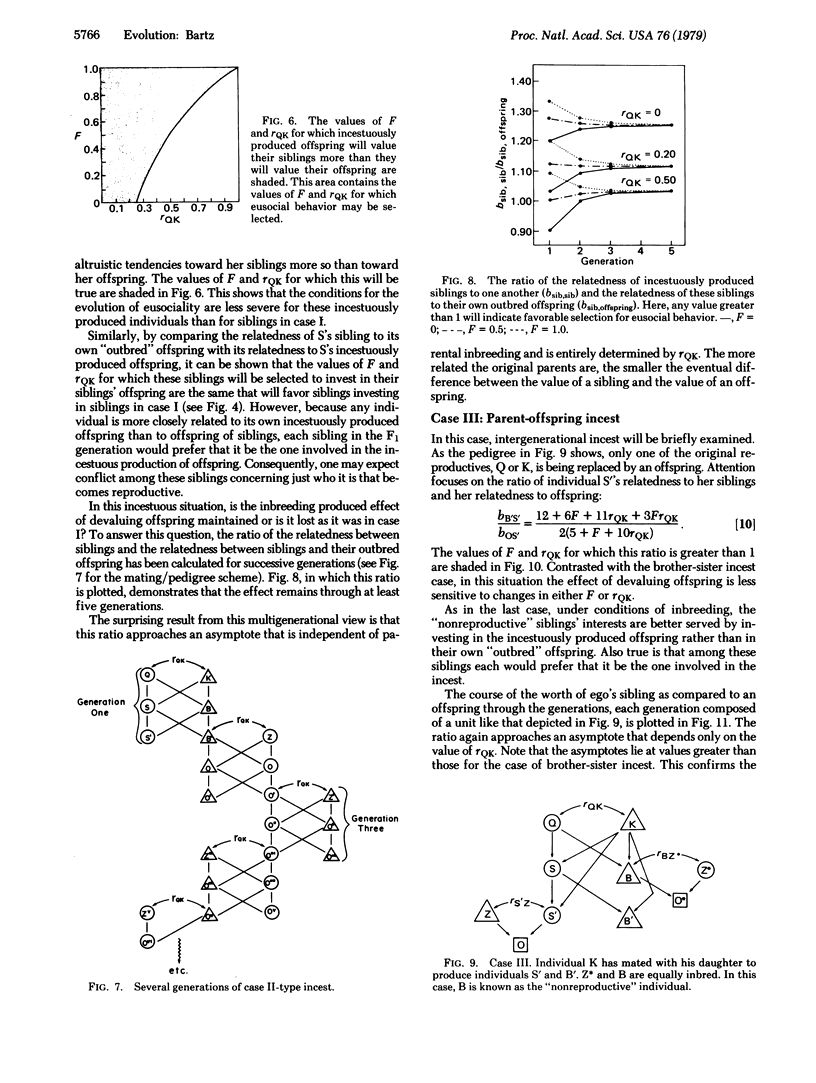
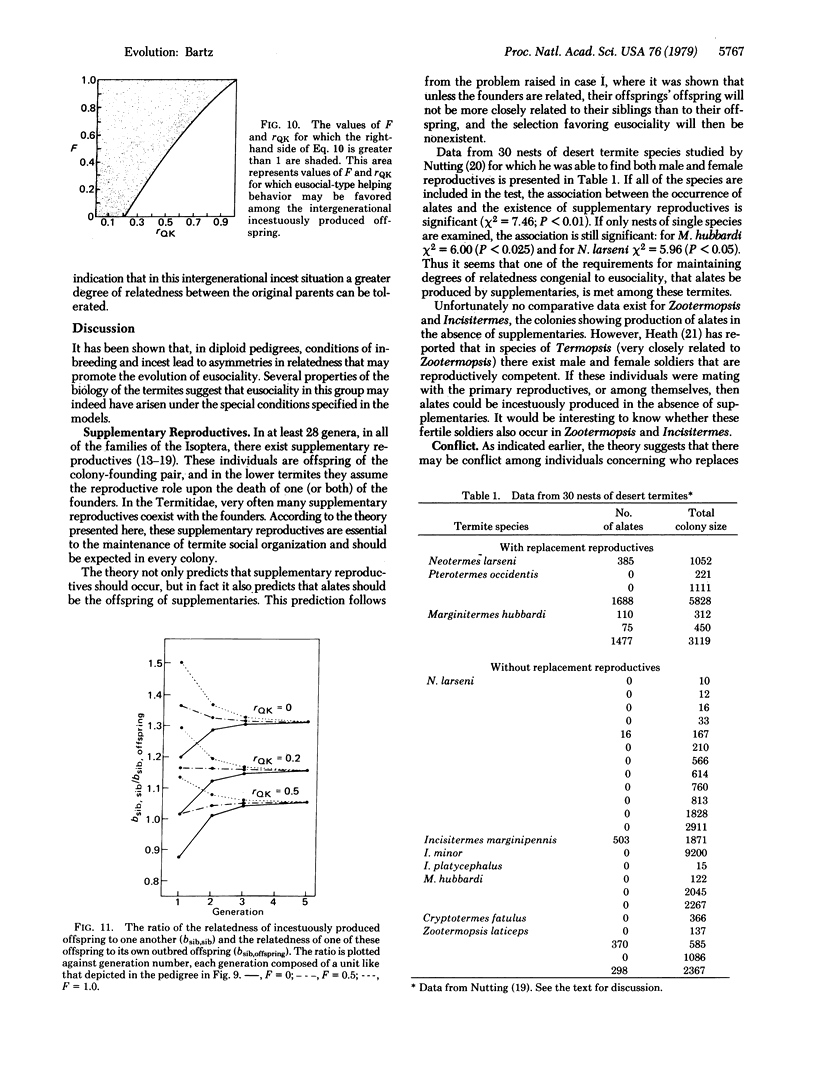
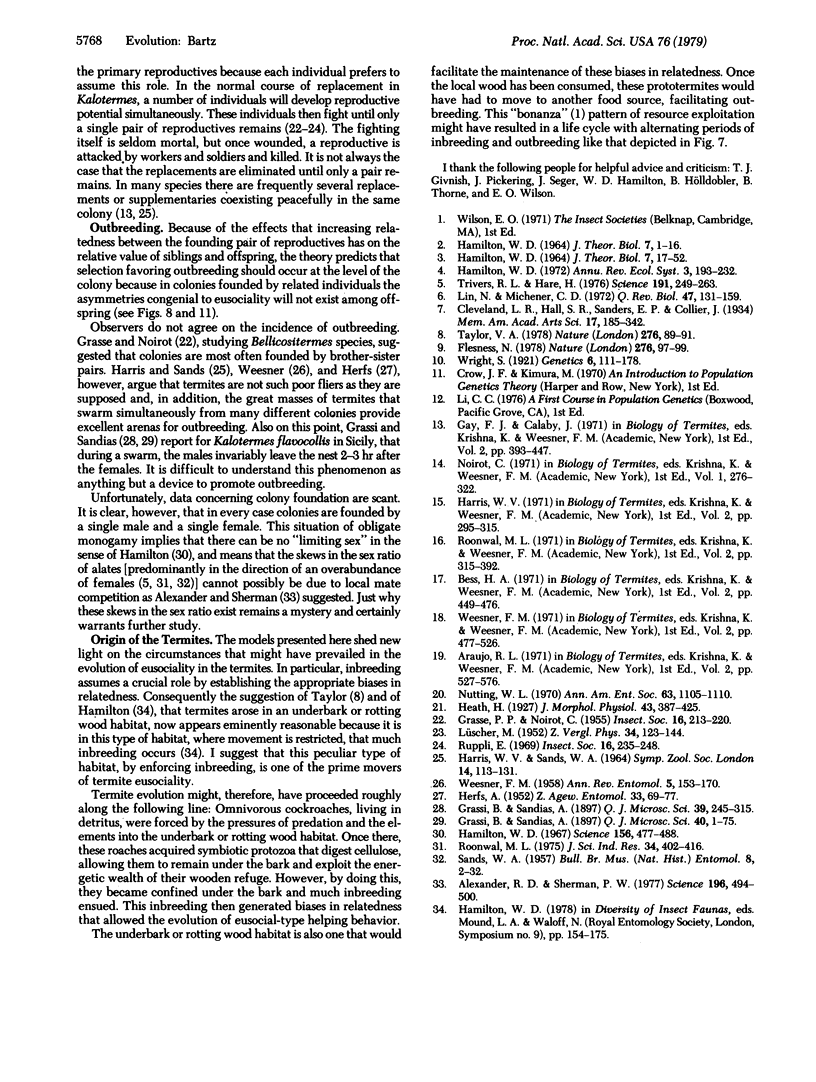
Images in this article
Selected References
These references are in PubMed. This may not be the complete list of references from this article.
- Alexander R. D., Sherman P. W. Local mate competition and parental investment in social insects. Science. 1977 Apr 29;196(4289):494–500. doi: 10.1126/science.196.4289.494. [DOI] [PubMed] [Google Scholar]
- Hamilton W. D. Extraordinary sex ratios. A sex-ratio theory for sex linkage and inbreeding has new implications in cytogenetics and entomology. Science. 1967 Apr 28;156(3774):477–488. doi: 10.1126/science.156.3774.477. [DOI] [PubMed] [Google Scholar]
- Hamilton W. D. The genetical evolution of social behaviour. I. J Theor Biol. 1964 Jul;7(1):1–16. doi: 10.1016/0022-5193(64)90038-4. [DOI] [PubMed] [Google Scholar]
- Hamilton W. D. The genetical evolution of social behaviour. II. J Theor Biol. 1964 Jul;7(1):17–52. doi: 10.1016/0022-5193(64)90039-6. [DOI] [PubMed] [Google Scholar]
- Trivers R. L., Hare H. Haploidploidy and the evolution of the social insect. Science. 1976 Jan 23;191(4224):249–263. doi: 10.1126/science.1108197. [DOI] [PubMed] [Google Scholar]
- Wright S. Systems of Mating. V. General Considerations. Genetics. 1921 Mar;6(2):167–178. doi: 10.1093/genetics/6.2.167. [DOI] [PMC free article] [PubMed] [Google Scholar]



